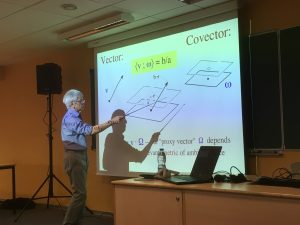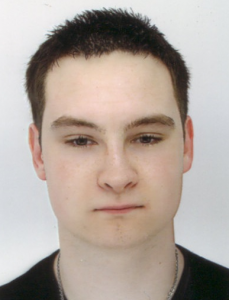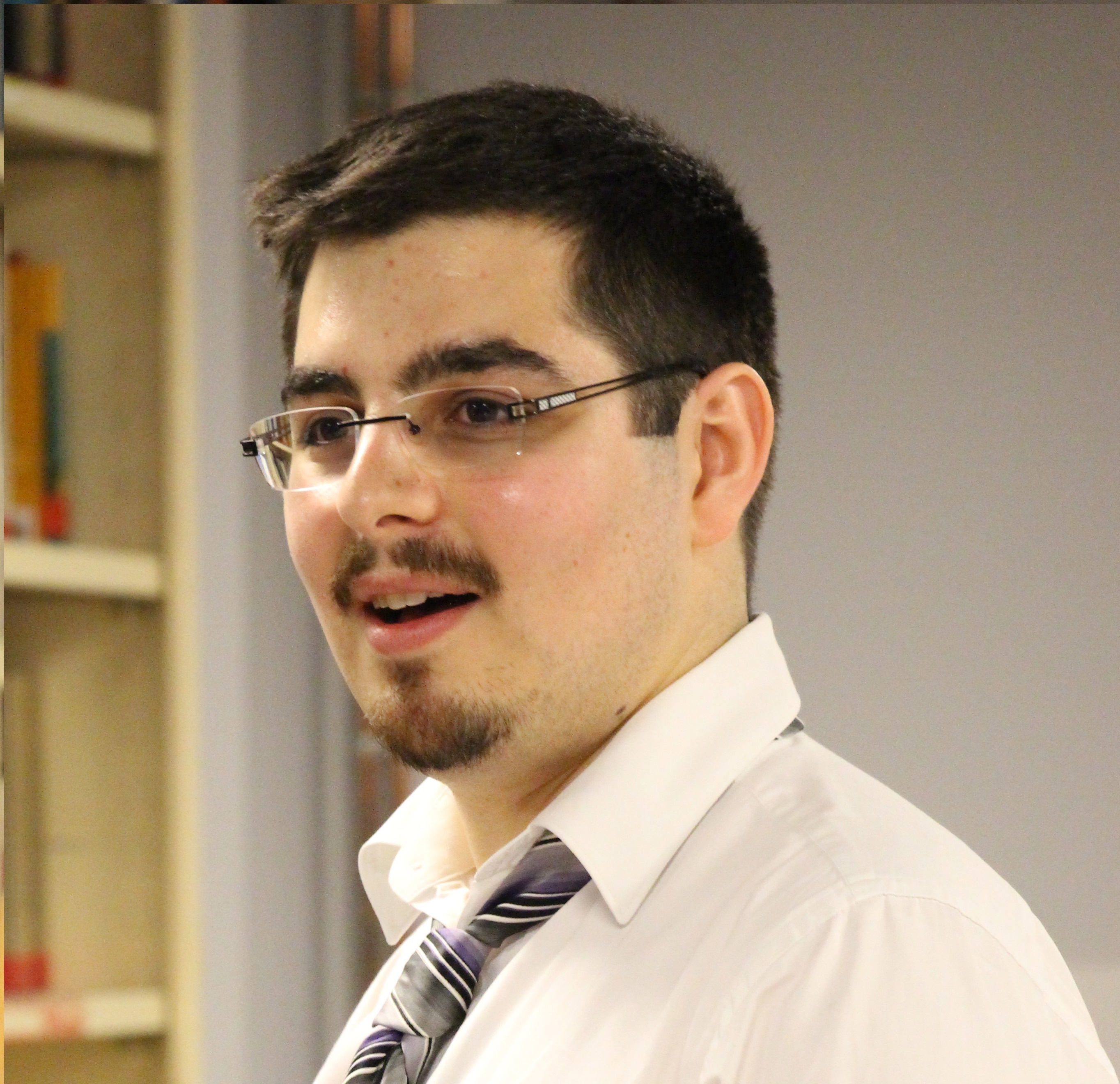Seminar in OMN TEAM
The research team OMN specializes in various numerical methods associated with electromagnetic field computation. We regularly organize the Junior Seminar, where presentations are given by our Ph.D. students and postdocs, and we occasionally host an Invited Seminar featuring presentations by external researchers.
If you are interested in giving a talk or exploring collaboration ideas related to our work, please contact Zuqi who is in charge of the seminar. The seminar can be conducted in English or French according to your preference, and there is no time limit for its duration.
Upcoming seminars:
2026–2027
January 13, Junior Seminar
Ilyas BENNIA
Internal and External Magnetic Sensors for Electrical Machine Diagnostics: Experimental Development and FEM-Based Analysis
Electrical machines are everywhere, from industrial drives to household appliances. Like all complex systems, they can develop hidden faults that reduce performance or cause failures. Detecting these issues early is crucial, and magnetic sensing offers a unique window into the inner workings of a machine, revealing internal faults and subtle electromagnetic changes.
By combining detailed finite element simulations with experimental measurements, A framework is created that bridges numerical models and real-world observations. The simulations capture how flux variations ripple inside the motor and radiate into the surrounding magnetic field, while experiments provide tangible evidence of these phenomena under the same operating conditions. Careful analysis in the frequency domain highlights the characteristic spectral fingerprints of faults, allowing a meaningful comparison between what the sensors capture internally and externally.
February 13, Junior Seminar
TBD
Mars 12, Junior Seminar
Badr CHERQUAOUI/Tarek DERRADJI
Mars 31, Junior Seminar
Léa SALEH/Sanchez GAETAN
May 05, Junior Seminar
Esteban HUSSON/Timon CALLENS
June 01, Junior Seminar
Vyvien DUMONT/Fatima HASSAN
July 03, Junior Seminar
Chloé PETRYKOWSKI
Past seminars:
2025 Les unités de production conventionnelles fonctionnent généralement à puissance fixe, ce qui limite la possibilité de valoriser l’énergie renouvelable disponible en cas de surplus. Bien que le stockage d’énergie à grande échelle soit encore difficile à mettre en œuvre de manière industrielle, une alternative prometteuse consiste à faire fonctionner les alternateurs hydroélectriques existants de façon plus flexible, à des puissances active et réactive variables, au-delà de leurs régimes nominaux. Cependant, un tel fonctionnement ne doit pas compromettre l’intégrité ni la durée de vie des machines. Ce projet de doctorat vise à évaluer la faisabilité du fonctionnement flexible des alternateurs hydroélectriques tout en garantissant leur fiabilité et leurs performances. Pour cela, un modèle numérique détaillé par éléments finis d’un alternateur connecté au réseau sera développé, puis validé par comparaison avec des mesures réelles à différents points de fonctionnement. Ce modèle permettra de simuler les conditions hors-nominales, de quantifier et de localiser les pertes fer au sein de la machine, et ainsi d’identifier les zones critiques susceptibles de surchauffer (points chauds). Ces zones seront ensuite vérifiées sur d’autres machines opérant dans des conditions similaires. L’objectif final est de proposer une méthodologie de surveillance robuste permettant une exploitation flexible et sécurisée des alternateurs, en phase avec l’essor des énergies renouvelables. Ce travail aura des retombées importantes sur les plans scientifique et technologique. Il contribuera à l’élaboration de stratégies avancées de surveillance pour les machines synchrones en fonctionnement flexible, à l’optimisation de la production d’électricité renouvelable, et au renforcement du leadership du Québec en matière d’innovation dans les énergies propres.December 04, 2025, Junior Seminar
Ronan CORIN
Topology optimization and additive manufacturing of magnetic cores
The work already completed to overcome these challenges include a first part dedicated to understanding the manufacturing process, especially the filament fabrication, its characterization and the definition of the appropriate thermal cycle to debind and sinter the printed shapes. A second part is dedicated to the optimization of the entire magnetic core or its cross section, which lead us to the printing and the characterization of the optimized parts.Juin 17, 2025, Junior Seminar
Liwaa ABOUCHAKRA
Reduced-Order Model Exploitation for the Multiparametric Analysis of the Magneto-Vibro-Acoustic Behavior of Electric Machines
Lionel GOUNOU
Alternateurs hydro-electriques flexibles : possibilites et limitations
May 14, 2025, Junior Seminar
Ayoub AINOUZ
Development of an approach combining physical modeling and artificial intelligence for modeling the magnetic properties of electrical steels
While physical models like Jiles-Atherton provide good interpretability, they face limitations in terms of accuracy, computational cost, and adaptability to dynamic or multi-physical conditions. To address these challenges, we propose a hybrid approach that combines the Jiles-Atherton model with a feedforward neural network. The neural network is designed to learn and correct the residual errors of the physical model, especially in dynamic regimes or under mechanical stress, thus enhancing both accuracy and robustness.
This combination allows us to preserve the physical meaning of the model while improving generalization beyond the training range. It also ensures faster computation, which is essential for integration into design tools.Ali SALLOUKH
Multiphysics modeling of an {inverter + machine + gearbox} system for an aeronautical application
April 23, 2025, Junior Seminar
Mohamed Reda SAOUTHI
Méthodologie de dimensionnement et de supervision énergétique d’un smart grid ferroviaire
The objective of this thesis is to propose a methodology for the optimal sizing and energy management of the complete system, applied to two different architectures for connecting the photovoltaic installation and the storage system. In the first architecture, the systems are connected to the substation with a purely economic objective. In the second architecture, the systems are connected at the paralleling point between two substations, aiming for both economic and technical objectives—particularly the maintenance of voltage levels at the pantograph.
Two distinct methodologies are proposed. The first involves the development of a linear optimization model that simultaneously optimizes the sizing of system components and energy management, ensuring results are obtained within a reduced computation time. The second methodology is based on a two-level approach, relying on more detailed optimization models that integrate the nonlinearities naturally present in the optimization objectives, functional constraints, and the behavioral laws of system components.Philomène CARTON
Development of methods adapted to the electromagnetic modeling of general ground networks
March 11, 2025, Junior Seminar
Sqalli GHALI
From Material to Magnetic Structure through Additive Manufacturing
Ze GUO
Hybrid Surrogate Modeling based on Physics and Data Driven Techniques applied to Multi-parameter Electromagnetic Problems
February 04, 2025, Junior Seminar
Fabien DANCOISNE
Characterization and modeling of soft ferromagnetic steels aging for iron losses reduction
January 07, 2025, Junior Seminar
Idriss NACHETE
Optimum Design Methodology of Planar Inductor Combining High and Low Permeability Magnetic Materials used for High-Current DC/DC Converter
November 28, 2024, 14:00, Invited Seminar (Esprit Building, Saphir 1)
 Pr. Hajime IGARASHI (Hokkaido University, Japan)
Pr. Hajime IGARASHI (Hokkaido University, Japan)Professor Hajime IGARASHI received the Ph.D. degree in engineering from Hokkaido University in 1992. He has been a professor at Graduate School of Information Science and Technology, Hokkaido University, since 2004. He was a guest researcher at Berlin Technical University, Germany, under support from the Humboldt Foundation from 1995–1997. His research area is computational electromagnetism, optimal design and AI-based design of electric machines. He has authored and coauthored more than 300 peer-reviewed journal papers. He is the author of the book entitled “Topology Optimization and AI-based Design of Power Electric and Electrical Devices” published from Academic Press in 2024.
Stochastic Topology Optimization of electromagnetic devices
This presentation begins with an overview of topology optimization based on stochastic and deterministic methods. We then focus on stochastic topology optimization based on Gaussian basis functions, which has been applied to the design of permanent magnet motors, dielectric lens antennas, and wireless power transmission devices. We extend this method to perform hybrid parameter-topology optimization, multi-material optimization, and fast optimization based on deep learning. Finally, we discuss the difficulties in stochastic topology optimization and its prospects.
December 02, 2024, Junior Seminar
Joel DRAPPIER
Numerical Resolution of Nonlinear Electromagnetic Problems in the
Presence of Anisotropy
Electrical machines are currently the subject of many researches to improve their efficiency by a few percent. One solution consists in using high performance magnetic materials (sheets). However, it appears that the behavior of these materials is highly nonlinear and anisotropic and also presents hysteresis when used in machines. In order to evaluate precisely the efficiency, before the construction of real prototypes, we use numerical modeling that must take into account the nonlinear character of these materials. The L2EP has been developing, with EDF R&D in the context of LAMEL, for many years a computational code, named code_carmel, based on the finite element method to model electromagnetic devices in low frequency. The objective of this PhD is to add to code_carmel the resolution of nonlinear problems integrating anisotropic and hysterical models. In this presentation, we will discuss the procedure developed to integrate anisotropy into the code, as well as a practical simulation case involving a toroidal core and a transformer corner, focusing on the field evolution and the resulting evaluation of iron losses.
November 07, 2024, Junior Seminar
Madeline CHAUVIER (UHPF)
Calcul en 2D de charges d’espace créées par les lignes de transport HVDC
Lors de cet exposé, je présenterai les problèmes de charges d’espace liés au transport du courant électrique dans les lignes haute tension à courant continu (High Voltage Direct Current (HVDC)). Je préciserai le modèle retenu couplant le potentiel électrique et la densité de charge d’espaces. En dimension 2, dans le cas d’une géométrie simple, je donnerai la forme des solutions. Dans un cadre plus général, j’ai obtenu un résultat d’existence de solutions mais celles-ci ne sont plus calculables. C’est pourquoi je proposerai un algorithme numérique et des simulations associées. Afin de valider cette méthode numérique, je comparerai, dans le cas simple, la solution exacte et la solution approchée. Je présenterai aussi des résultats numériques pour une géométrie plus réaliste.
October 11, 2024, Seminar
Marwane DEHRBECOURT
FFF additive manufacturing of ferrites: from filament conception to characterization
The democratization of additive manufacturing technologies began in the late 80s, with the appearance of the first 3D printers. Today, they offer solutions adapted to the challenges faced in various domains of scientific research and industry. In particular, electrical engineering can greatly benefit from the opportunities offered by FFF (fused filament fabrication) printing and the diversification of materials used. This process enables the creation of complex, customized structures, and offers the advantage of low manufacturing costs. Our work aims to fully master the PIM-like additive manufacturing chain for the production of MnZn and NiZn ferrites: feedstock development, FFF printing, debinding, sintering and process validation by magnetic characterization.
September 18 & 19, 2024, Invited Seminar
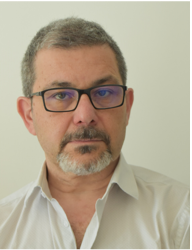 Pr. Alessandro FORMISANO (Università della Campania “Luigi Vanvitelli”, Italy)
Pr. Alessandro FORMISANO (Università della Campania “Luigi Vanvitelli”, Italy)
Alessandro Formisano holds a MS in Electronic Engineering from Univ. di Napoli “Federico II” and a PhD in Electrical Sciences from the same university. He is full professor of Electrical Sciences since 2016 at Università della Campania “Luigi Vanvitelli”.
Professor Formisano interests are in the numerical computation of electromagnetic fields, in the resolution of inverse problems in electromagnetism, in the machine learning approaches, and finally in the engineering aspects of nuclear fusion. He was Co-Chairman of the 2020 Edition of the CEFC, and is the general chairman of the Compumag 2025 conference.
Inverse Source Problems in Low Frequency Electromagnetism: Classical Approaches and the role of Machine Learning Techniques
Inverse Source Problems are characterized by the need of identifying a source from the measurement of its effects. In the case of Low Frequency Electromagnetism, a typical case is the reconstruction of current distribution from remote magnetic field. This problem presents an ill posed nature, and consequently its resolution requires special actions to produce reliable results. In this short seminar, the classical regularization methods will be briefly discussed, in the perspective of providing a gentle introduction to more recent approaches based on machine learning.
September 23, 2024, Invited Seminar
 Pr. Alessandro FORMISANO (Univ. Della Campania “Luigi Vanvitelli”, Italy)
Pr. Alessandro FORMISANO (Univ. Della Campania “Luigi Vanvitelli”, Italy)
Alessandro Formisano holds a MS in Electronic Engineering from Univ. di Napoli “Federico II” and a PhD in Electrical Sciences from the same university. He is full professor of Electrical Sciences since 2016 at Università della Campania “Luigi Vanvitelli”.
Professor Formisano interests are in the numerical computation of electromagnetic fields, in the resolution of inverse problems in electromagnetism, in the machine learning approaches, and finally in the engineering aspects of nuclear fusion. He was Co-Chairman of the 2020 Edition of the CEFC, and is the general chairman of the Compumag 2025 conference.
A short introduction to (Magnetically Confined) Thermonuclear Fusion
The world energy demand is getting higher and higher, but the fossil sources are rapidly exhausting, not to speak of their environmental impact. The need for alternative, sustainable energy sources is strong. Among those, nuclear fusion represents one of the top choices, but its complexity is overwhelmingly demanding: high-energy physics to be controlled, incredibly large magnetic fields to be generated with high accuracy and driven accordingly to tightly controlled waveforms. Not to speak of the intrinsically unstable nature of a burning plasma! The technology behind a possible reactor represents one of the most advanced research frontiers in engineering. This short seminar aims to deliver a gentle introduction to the physics of magnetically confined thermonuclear fusion, showing the achievements but also the critical aspects of this promising technology.
July 09, 2024, Junior Seminar
Esteban HUSSON
Modélisation et expérimentation sur un capteur de courant, basé sur la technologie Rogowski
Cette thèse porte sur la modélisation du capteur de courant interne aux disjoncteurs en tête d’installation (air circuit breaker ou ACB). Ce capteur mesure les courants d’entrée de l’installation à protéger, grâce à un tore Rogowski, mais sert également à l’auto-alimentation de l’ACB grâce à des transformateurs de courant. La mesure de courant permet d’assurer les fonctions de protection et de monitoring. La fonction d’auto-alimentation est exigée à l’ACB pour pouvoir fonctionner quel que soit le type de défaut sur l’installation électrique. Le problème principal se situe donc dans les interactions entre le tore de Rogowski et le circuit magnétique du TC. Il est dimensionnellement impossible dans l’ACB de séparer physiquement ces deux éléments. Le transformateur de courant et le tore de Rogowski doivent donc coexister dans un environnement proche, et cela impacte fortement les performances de mesure demandées au tore de Rogowski.
June 06, 2024, Junior Seminar
Développement de méthodes adaptées à la modélisation de défauts complexes en Évaluation Non Destructive par courant de Foucault
La thèse porte sur la détection des microfissures dans les centrales nucléaires, plus précisément dans les tubes constituant le générateur de vapeur. Ces tubes, de faible diamètre, transportent l’eau du circuit primaire à haute température et sont soumis à de fortes contraintes de pression, ce qui peut entraîner des fissures dues au phénomène connu sous le nom de « corrosion sous contrainte ». Des inspections régulières de ces tubes sont menées pour garantir la sûreté des installations, et l’une des méthodes utilisées est le Contrôle Non Destructif par Courant de Foucault (CND-CF), qui permet de vérifier l’intégrité des pièces conductrices. Pour cela, une sonde générant un champ électromagnétique est placée à proximité de la pièce à tester. Comme la pièce est conductrice, des courants induits (courants de Foucault) se développent à l’intérieur. Le flux d’induction magnétique est alors capté par deux sondes réceptrices. Lorsque la différence de flux est significative, cela peut indiquer la présence d’un défaut.
L’objectif de la thèse est d’étudier deux aspects : la modélisation du processus de CND-CF à l’aide de méthodes numériques telles que les éléments finis, afin de pouvoir traiter des configurations aussi complexes que nécessaire. Ainsi que la paramétrisation de fissures réalistes rencontrées dans les tubes du générateur de vapeur. La modélisation des fissures peut nécessiter l’utilisation de méthodes intrusives. Enfin, cela permettra de mener des études réalistes via le processus de propagation de l’incertitude afin de comprendre et d’identifier plus précisément les paramètres influents (PI). Ces simulations peuvent apporter une aide précieuse aux ingénieurs en les aidant à interpréter les signaux atypiques détectés sur site et donc d’aider à la prise de décision.
Magnetic Aging of Non-Oriented Electrical Steels Subjected to Thermal Operating Conditions Encountered in Electrical Mobility Applications
Electrical mobility applications are becoming increasingly popular today as a part of the move towards net zero emissions. As a result, efficiency improvements in this sector have become essential. The latter calls for significant efforts to be made to improve the energy efficiency of electrical machines used in the automotive industry. One way to achieve this is by optimizing the performance of the machine core. This core, made of iron silicon electrical steel, is subjected to high operating temperatures over time. This triggers atomic diffusion and precipitation mechanisms that can modify the core microstructure, irreversibly deteriorating its magnetic performance and thus increasing its losses (iron losses). This phenomenon is known as magnetic aging.
The magnetic aging phenomenon in electrical steels is the main focus of my PhD thesis, as studying this phenomenon can allow to optimize the magnetic performance of the electrical machine by reducing the additional losses that this phenomenon can introduce into the machine core. In fact, as my PhD thesis is part of the ANR MASTERMIND2 project, it aims to develop a multi-physical model of magnetic aging mechanisms and their consequences on iron losses while linking the observed magnetic behavior to its underlying microscopic phenomena. Particularly, and in order to achieve the aforementioned aim, my work focuses on the macroscopic behavior of non-oriented iron silicon (Fe-Si) steel samples in response to magnetic aging. Understanding the macroscopic behavior of these steels will allow me to account for the microscopic phenomena underlying magnetic aging and to develop physical models that depict the macroscopic/microscopic behavior. These models can be, nevertheless, useful for machine manufacturers in order to produce electrical machines that are more resilient to the effects of magnetic aging.
So far, throughout the first research studies of my PhD thesis, the macroscopic models investigated include the Steinmetz model and the iron loss separation model for the iron losses, as well as the JMAK model for the precipitation phenomenon underlying magnetic aging. Moreover, models that can depict the first magnetization B-H curve are still under investigation as it has been shown to be impacted by magnetic aging for our studied non-oriented electrical steels. The results of the studied macroscopic models are to be further integrated into microscopic models, such as the mean radius model.
May 07, 2024, Junior Seminar
Zhenxin LI
The ODF-based method for the modeling of the B-H magnetization curves of Grain Oriented Electrical Steels considering mechanical stress
Grain oriented electrical steels (GOES) are widely used in power transformers to improve energy efficiency and reduce size and weight. GOES are characterised by their strong magnetic anisotropy, which results in different magnetic properties depending on the direction and intensity of the applied field with respect to the rolling direction (RD). The Orientation Distribution Function (ODF) based approach is a convenient method to describe the anisotropy of the GOES behaviour law due to its ease of identification and implementation. In our previous work, an improvement of the ODF-based model is proposed to increase the modelling accuracy. Recently, we extend the ODF-based model to account for the mechanical stress on the first magnetization curves of a conventional GOES. Furthermore, a simple smoothing method is given to alleviate the oscillation problem found in the ODF-based method.
March 26, 2024, Junior Seminar
Othmane MARBOUH
Capteurs RF MEMS électro-acoustiques passifs et sans fil pour le diagnostic précoce de défauts dans les machines électriques de fortes puissances
February 15, 2024, Junior Seminar
Wei CHEN
Application des méthodes de réduction de modèle numérique pour la quantification d’incertitude en génie électrique
January 09, 2024, Junior Seminar
Walid MOHAND OUSSAID
Investigations des pertes dans les plateaux et doigts de serrage dans les machines de fortes puissances
December 01, 2023, Junior Seminar
Liwaa ABOUCHAKRA
Intégration de modèles réduits pour l’analyse multiparamétrique du comportement magnéto-vibro-acoustique de moteurs électriques
September 11, 2023, Invited Seminar
 Pr. Tetsuji MATSUO (Kyoto University, Japan)
Pr. Tetsuji MATSUO (Kyoto University, Japan)
Tetsuji Matsuo received the B.E., M.E., and Dr. Eng. degrees from Kyoto University, Japan, in 1986, 1988 and 1991, respectively. He became a Research Associate, a Lecturer, and an Associate Professor at Kyoto University in 1991, 2001, and 2003, respectively. He is currently a Professor in the Department of Electrical Engineering, the Graduate School of Engineering, Kyoto University. His current research interests include computational electromagnetics and magnetic material modeling.
Physical/Phenomenological Modeling of Magnetic Materials
July 11, 2023, Junior Seminar
Ayoub AINOUZ
Development of an approach combining physical modeling and artificial intelligence for modeling the magnetic properties of electrical steels
June 08, 2023, Junior Seminar
Sqalli GHALI
Du matériau à la structure magnétique par fabrication additive
Mohamed Reda Saouthi
Méthodologie de dimensionnement et de supervision énergétique d’un smart grid ferroviaire
May 04, 2023, Junior Seminar
Joel DRAPPIER
Résolution numérique de problèmes électromagnétiques non linéaires en présence d’hystérésis et anisotropie
Fabien DANCOISNE
Characterization and modelling of ferromagnetic material aging for iron losses reduction
April 06, 2023, Junior Seminar
Zhenxin LI
Improvement of the ODF method for the modeling of the B-H magnetization curves of Grain Oriented Electrical Steels
Idriss NACHETE
Optimal Planar Inductor Design
March 08, 2023, Junior Seminar
Othmane MARBOUH
Capteurs RF MEMS électro-acoustiques passifs et sans fil pour le diagnostic précoce de défauts dans les machines électriques de fortes puissances
Les machines électriques de fortes puissances sont soumises à des contraintes sévères en fonctionnement, afin d’assurer la fiabilité et la continuité d’opération de ces machines, notamment par anticipation des opérations de maintenance et de fonctionnement dégradé si nécessaire, il est primordial de disposer d’informations sur ces contraintes, souvent à l’échelle locale. Par ailleurs, obtenir ces informations au niveau du rotor est le moyen le plus sûr pour assurer une surveillance et un diagnostic robustes et fiables. Seules les technologies de capteurs sans fil et sans batterie associées à des techniques efficaces d’analyse des données et de traitement des signaux peuvent satisfaire un tel besoin. La technologie des composants SAW, exploitant les ondes acoustiques de surface, permet de concevoir des capteurs sans fil et totalement passifs et permet ainsi de répondre à toutes ces contraintes. De nombreuses grandeurs physiques sont mesurables sur cette même base technologique moyennant une ingénierie avancée du design : température, contraintes mécaniques, champ magnétique.
January 24, 2023, Junior Seminar
Walid MOHAND OUSSAID
Investigations des pertes dans les plateaux et doigts de serrage dans les machines de fortes puissances
Les dispositifs de serrage sont utilisés pour appliquer la pression nécessaire au maintien des tôles du stator dans le cas de machines de grande puissance telles que les grands turbogénérateurs. Les courants dans les enroulements d’extrémité du stator et du rotor induisent des courants de Foucault dans ces pièces de serrage qui sont généralement réalisées en acier magnétique conducteur en raison de contraintes économiques. L’enjeu principal est celui de la connaissance la plus précise possible des pertes engendrées par les courants induits dans les plateaux et doigts de serrage utilisés dans les machines électriques de fortes puissances. Plus spécifiquement, les investigations devront analyser l’effet des différentes composantes du champ magnétique ainsi que leurs effets en fonction des matériaux utilisés pour les dispositifs de serrage. Pour ce faire, une approche combinée expérimentale / numérique sera mise en œuvre.
December 13, 2022, Junior Seminar
Wei CHEN
Application des méthodes de réduction de modèle numérique pour la quantification d’incertitudes en génie électrique
Dans cette présentation, je vais présenter la méthode de Cauer ladder circuit implémenté dans Code Carmel ainsi que le sujet de ma thèse.
November 17, 2022, Seminar
Zuqi TANG
Investigation of deep learning applied to computational electromagnetism
With the development of graphics processing unit (GPU) hardware and algorithm efficiency, deep learning (DL) is shown to be a very powerful tool. It has been widely applied to scientific research and has achieved many satisfactory results. However, the requirement for big data has greatly limited its further application in electrical engineering, where the data generally comes from complex experiments or expensive computations. To address this issue, the feasibility and efficiency of the convolutional neural network (CNN) have been investigated, particularly the U-net. Due to its excellent feature extraction capability, the CNN U-net can be effectively trained with only a small dataset. Different applications have been carried out with U-net, such as surrogate model construction for the computation of coupled magneto-thermal problems, the anisotropic magnetostatic problems, as well as hysteresis loop measurement under different physical considerations. To improve the efficiency of the DL process, the sample selection strategy is optimized by adopting the greedy algorithm. In addition, an adaptive dataset construction approach is put forward to enhance the accuracy of the DL. Besides, physics-informed consideration has been combined recently with the CNN to further improve its interpolation performance and extrapolation capacity under certain physical restrictions.
June 23, 2022, Junior Seminar
Hamza FAROOQ
Optimal Sizing of Line Start Permanent Magnet Synchronous Motor (LSPMSM)
Electric motors consume around 46% of the overall electricity produced around the globe. A significant proportion of this electricity is used to drive motors for direct-start applications such as fans or pumps. Currently, squirrel cage induction motors (SCIM) are widely used in these applications. Recently, due to the regulations of international electrotechnical commission (IEC), there is a trend to replace SCIM by a line start permanent magnet synchronous motor (LSPMSM) to enhance the efficiency of direct-start and fixed speed applications. This thesis involves the development of an analytical model based on a reluctance network (RN) for the optimal design of LSPMSM. The design parameters such as back EMF and d-q axis magnetizing inductances are estimated using the reluctance network approach (RNA) to consider the saturation effect. The developed model is used to determine the transient and steady-state characteristics of LSPMSM. The adopted approach addresses two design challenges: 1) the self-starting ability and 2) IE4 efficiency level during the synchronous regime. The results obtained by the proposed model are compared with the results of the finite element method (FEM) to validate the model. To further assess the robustness of the proposed method, an experimental validation will also be performed.
May 23, 2022, Junior Seminar
Marwane DHERBECOURT
Caractérisation des propriétés mécaniques de différents grades d’acier par des techniques de contrôle non destructif ultrasonore et électromagnétique
Les produits tubulaires commercialisés par Vallourec subissent des tests destructifs rigoureux pour s’assurer que leurs propriétés mécaniques soient conformes aux normes et aux spécifications des clients. En particulier, les tubes en acier bas carbone sans soudure destinés au marché du pétrole et du gaz doivent être des produits fiable et durable. Pouvoir mesurer de manière non destructive certaines des propriétés mécaniques de ces aciers répondrait à un besoin industriel fort. C’est le défi auquel cette thèse veut répondre : mettre en place une méthodologie permettant de mesurer une ou plusieurs grandeurs mécaniques des nuances d’acier Vallourec, à partir de signaux obtenus par des techniques de contrôle non destructives (CND). Afin de décorréler rigoureusement les différentes contributions qui influencent les mesures expérimentales, une analyse détaillée des mécanismes impliqués est nécessaire. Aussi, notre attention se porte sur l’évaluation des propriétés suivantes : limite d’élasticité, résistance ultime à la traction, dureté et contraintes résiduelles. Pour ce faire, des techniques CND électromagnétiques et ultrasonores prometteuses pour la caractérisation matériau des aciers sont mises en place.
April 25, 2022, Junior Seminar
Théo DELAGNES
Réduction de modèle numérique pour le dimensionnement électromagnétique de machines électriques
Pour étudier finement le comportement d’un dispositif électrotechnique hors de son environnement, on utilise généralement des modèles numériques basées sur une approche de type éléments finis (EF). Ainsi, il est possible d’obtenir une représentation fidèle des distributions de champs magnétiques et électriques au sein du matériel étudié. Cependant, ces modèles possèdent un grand nombre d’inconnues et génèrent des temps de calcul importants, qui rendent difficile leur utilisation dans un contexte industriel. Les méthodes de réduction de modèles permettent de réduire drastiquement le nombre d’inconnues associé à un modèle numérique. Parmi ces méthodes, certaines nécessitent des simulations préliminaires effectuées avec le modèle numérique complet, dont certains résultats soigneusement choisis permettent de construire une base réduite. Cette base est ensuite utilisée pour projeter le système d’équations, ce qui permet de réduire le nombre de degrés de libertés du problème, et introduit une erreur sur l’approximation du résultat. Cependant, lorsque le problème auquel on s’intéresse présente des non linéarités, la projection seule ne permet pas une réduction satisfaisante des temps de calcul, car l’évaluation des termes non linéaires à chaque étape du calcul est très couteuse. Dans ce contexte, des méthodes d’interpolation permettent de calculer les non linéarités à certains endroits spécifiquement sélectionnés du domaine étudié, et d’interpoler le reste des termes non linéaires. Mon travail consiste à appliquer les méthodes de projection et d’interpolation à un problème magnétodynamique non linéaire avec mouvement, pour construire un modèle réduit d’une machine asynchrone à cage d’écureuil valide sur une plage de fonctionnement du dispositif.
February 21, 2022, Junior Seminar
Wissem BEKIR
Prise en compte de la perte d’aimantation réversible et irréversible des aimants permanents dans les machines électriques
December 13, 2021, Junior Seminar
Leysmir MILLAN MIRABAL
Iron loss Modelling of Anisotropic Soft Magnetic Steels in FEM Simulation
This presentation will serve to introduce an recently develop anisotropic iron loss model from the INRIM laboratory in Italy. The model has been integrated into the finite element software code_Carmel in post-processing, and its implementation have been tested and validated by comparison with experimental results. This developpement are part of the work realized during my PhD thesis.
December 13, 2021, Junior Seminar
Allaa Eddine BOUMESBAHL
Development of metamodels for low-frequency electromagnetic devices
In recent years, the electric vehicles market is witnessing a large expansion. One of the points of interest is to reduce the electromagnetic noise generated by electric motors. Our work is a part of the project « E-Silence », consisting in reducing the electromagnetic noise in electric machines without deteriorating the performances or increasing the cost. In order to include the noise issue in the early design phases of a machine, it is required to compute the electromagnetic force for a large set of parameters, which may generate a prohibitive time cost if using a finite element model. A solution is to create a parametric metamodel using model order reduction or interpolation approaches. In this presentation, geometric parametric metamodels are built based on the proper orthogonal decomposition combined with the radial basis functions interpolation method (POD-RBF) and the proper generalized decomposition method (PGD). These approaches are evaluated for academic examples, then applied to the case of an electric machine.
November 18, 2021, Junior Seminar
Houssein TAHA
Mise en oeuvre du modèle de Darwin par la méthode des éléments finis en vue de modéliser les machines électriques à des fréquences intermédiaires
Dans les dernières années, la modélisation des composants magnétiques et électriques suscite beaucoup d’intérêt dans la recherche scientifique. Un modèle magnétodynamique est suffisant pour décrire le comportement des machines électriques dans les basses fréquences, mais, avec l’apparition de l’électronique de puissance, les machines sont soumises à des tensions hautes fréquences, cela nécessite une modélisation des isolants surtout en raison du vieillissement auquel ils seront exposés. L’objectif de ces travaux est de calculer le champ électrique dans les milieux non conducteurs, en particulier, les effets capacitifs. En effet, vu que les modèles classiques tels que la magnétostatique et la magnéto-quasistatique ne prennent pas en compte la modélisation de ces effets, il est indispensable de mettre en œuvre des formulations en potentiels adaptées dans le code_Carmel pour calculer simultanément les champs électriques et magnétiques, telle que le modèle de Darwin. Ce modèle est capable de capturer les effets capacitifs-inductifs couplés à des fréquences intérmédiaires, en particulier, autour de la fréquence de résonnance. En revenche, l’électrostatique et l’électro-quasistatique sont parmi les modèles connus qui sont capables à modéliser les effets capacitifs. Différentes applications industrielles ont été présentées afin de valider les résultats de simulation obtenus par le modèle de Darwin en les comparant aux résultats de mesures.
October 01, 2021, Junior Seminar
Ruohan GONG
Investigation about Deep learning application in the field of computational electromagnetics
In recent years, deep learning (DL) has been developed rapidly and has conquered many fields and achieved state-of-the-art performance, such as visual recognition, natural language processing, etc. Particularly, convolutional neural network (CNN) has gained tremendous popularity and has been widely used because of its capacity to automatically execute feature engineering on its own. In this presentation, the possibility of applying CNN in the field of computational electromagnetics will be investigated, which can be used as an efficient tool with only a small database. Some typical applications will be presented: the magneto-thermal coupled analysis for transformer, the anisotropy magnetostatics analysis, and the prediction of the hysteresis loops of ferromagnetic materials. The feasibility of the proposed approach are analyzed and discussed in term of the influence of various network hyperparameters. The presented work can provide guides for other DL scenarios in electrical engineering.
Mars 05, 2020, Junior Seminar
Meryeme Jamil was born in Rabat, Marocco in 1994. She received the Dipl.-Ing. degree in material engineering (with honors) from ENSMR (Mine Rabat) in 2016, and a master degree titled “Material for Energy and Transport” from Paris-Saclay University in 2017. During her master internship, she worked on electrical and magnetic characterization of magnetite poweder in the L2EP laboratory in collaboration with EDF CEIDRE. She is currently a PhD student at the University of Lille and Valeo Powertrain Systems company (CIFRE). She works on the characterization of soft magnetic materials used in electrical machine, mainly the claw pole machine. The aim of her researches is the study of the impact of the machine functioning temperature on the material electromagnetic properties.
Impact of the machine functioning temperature on the material electromagnetic behavior
Magnetic materials are at the heart of the energy conversion in electrical machines. Their electric and magnetic properties are strongly related to the machine performances and energy efficiency. In order to study and to simulate the electrical machine under its operating conditions, the material electromagnetic behavior should be well known and well characterized not only at room temperature but also at the machine operating temperatures. In fact, during the machine operation, in some hot spots, the magnetic core temperature may reach high temperature levels. As a consequence, the magnetic core properties may considerably change, as for the electrical conductivity to which eddy current losses are directly linked. This modifications can be reversible and disappear once the core has cooled, as it can be irreversible and then speaks of magnetic aging of the material. So, to predict accurately the machine performances, it is necessary to perform both thermal and electromagnetic analyses, starting by characterizing the temperature dependence of the core electromagnetic properties and investigating the magnetic ageing.
November 28, 2019 at 14h00, Invited Seminar (Visiting Ph.D student from Hokkaido University
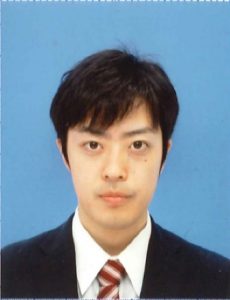 Shingo Hiruma (Hokkaido University, Japan)
Shingo Hiruma (Hokkaido University, Japan)
Shingo Hiruma received the B.E. and M.E. degrees from Hokkaido University, Sapporo, Japan in 2017 and 2019. He is currently a Ph.D. student in Hokkaido University, and a research fellow of Japan Society for the Promotion of Science (JSPS). His research interest is the computational electromagnetism using model order reduction technique.
Model order reduction via Cauer circuit representation of quasi-static Maxwell equations
In this presentation, we discuss the relation between the quasi-static Maxwell equations and Cauer circuit representation. Starting from a discussion of 1-D model, Kameari’s Cauer ladder network (CLN) method is introduced. It is shown that the CLN method is equivalent to the self-adjoint Lanczos algorithm when the quasi-static Maxwell equations are discretized by the finite element method. From this relation, a new method is formulated which allow to approximate a given transfer function by a continued fraction.
July 8, 2019 at 14h00, Invited Seminar
Stéphane Clénet is full professor of electrical engineering at Ecole Nationale Supérieure d’Arts et Métiers (ENSAM), France. After the completion of his PhD, he was Associate Professor at the University of Lille in 1994 before being appointed as full professor in 2002 at ENSAM. In 2008, he was visiting professor as Fulbright Grantee at the University of Akron (USA) in 2008 and 2014 and at Mc Gill University (Canada) in 2015. From 2007 to 2014, he ran a research team in the field of computational electromagnetics and its applications involving more than 25 professors, post docs and PhD students. From 2016 to 2019, he was the director of the campus ENSAM of Lille. He works on the development of 3D Finite Element Model in low frequency. Since 2004, his research focuses mainly on uncertainty quantification in computational electromagnetics based on stochastic approaches and also on Model Order Reduction technics (POD, PGD…). He is co-author of 85 publications in international journals. He has collaborated with numerous researchers from different universities in France but also from abroad like in Liège (Belgium), Akron (USA), Santa Catarina (Brésil), Mc Gill and Laval (Canada), Aalto (Finland), Tsinghua (China), Aachen (Germany). He develops numerous research projects in partnership with major companies like EdF, Valeo, CEA.
Why and how uncertain quantification can be useful in low frequency electromagnetism?
In some applications represented by very accurate models (the modelling and the numerical errors are negligible), if a gap exists between the measurements, assuming perfect, and the results given by the numerical model, it comes from deviations on input parameters which are not in the ”real world” equal to their prescribed values. The origins of these deviations are numerous and are related to either a lack of knowledge or uncontrolled variations of quantities like temperature, pressure, magnetization. To account for these uncertain deviations on model parameters, the stochastic approach can be used. The model parameters as well as the outputs are then random fields or variables. Several methods are available in the literature to solve stochastic models like sampling methods, perturbation methods or approximation methods. In this presentation, we propose an overview on the solution of stochastic problems in computational electromagnetics. Some applications will be presented in order to illustrate the possibilities offered by this approach Finally, recent numerical techniques proposed in the literature to alleviate the cumbersome needs of resources in terms of memory and time calculation of the stochastic approach particularly due to the the curse of dimensionality appearing when the number of uncertain parameters increases.
June 27, 2019, Invited Seminar (Invited Prof. of ULille)
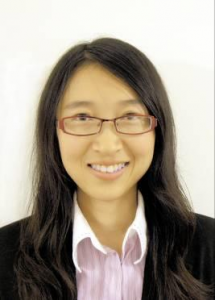 Dr. Shuai YAN (Institute of Electrical Engineering, Chinese Academy of Science)
Dr. Shuai YAN (Institute of Electrical Engineering, Chinese Academy of Science)
Shuai Yan received the B.S. degree in Mathematics and Applied Mathematics from Beijing Normal University in 2007 and the M.S. degree in Computational Mathematic also from Beijing Normal University in 2010. She received the Ph.D. degree in Computational Optics in University of Erlangen-Nuremberg in Germany, 2014. After that, she joined the Chinese Academy of Science as an Associated Researcher. She has published more than ten papers in international journals. Her current research interests are model reduction techniques for full wave analysis and optimization of high frequency RFID systems and also efficient solvers for multi-physics analysis in integrated circuit design.
Title: Model Order Reduction with POD/PGD and Related Applications in Computational Electromagnetics
Modern industrial development brings new challenges to computational electromagnetics by introducing extremely computationally intensive problems and the needs of real-time simulation. Model order reduction can help with tacking these challenges from two perspectives. One is to solve the problems with less computational cost in time and memory, another is to build a compact parametric model from an “offline process” which can be used to achieve a fast solution during an “online process”. POD and PGD are two important MOR techniques that attracts much attention in recent years. In this presentation, I will discuss about the implementation of POD and PGD in both static and high frequency problems. Issues including complex domains, high dimensionality as well as adaptive algorithms will be addressed.
June 13, 2019, Junior Seminar
Emna Jaïem obtained a PhD degree in Applied Mathematics from Tunis El Manar University, Tunis, Tunisia in July 2016. During her PhD thesis, she investigated the geometrical inverse problem related to the identification of defects in mechanical structures from, on the one hand, overdetermined boundary data and, on the other hand sub-Cauchy data. Indeed, her research fields include shape optimization (shape derivative, topological derivative, level set method, …). In September 2017, her work was recognized with the TWMA (Tunisian Women Mathematicians’ Association) award for the best PhD thesis in Applied Mathematics for Tunisian women. She is currently a postdoctoral researcher at L2EP working on the numerical analysis of electromagnetic fields and more precisely on spectral methods (Harmonic Balance Method).
Harmonic balance finite element method applied to electromagnetic problems
The time stepping approach is a well-known numerical method to model electromagnetic problems. However, it can present some drawbacks since it requires expensive computation time in the case of a large transient state. To overcome this problem, harmonic balance method can be used. In the first part of the presentation, we introduce this method. Then, we apply it for electrical machines taking into account the motion. Furthermore, we compare the solutions obtained by the harmonic balance finite element method coupled, on the one hand, with the A formulation and, on the other hand, with Ω formulation with those obtained by the reference method; namely the time stepping finite element method.
Since harmonic balance method relies on the representation of time-periodic function by a truncated Fourier series, the problem of harmonics selection is discussed in the second part of the presentation. A novel approach based on time residual is proposed to solve a nonlinear magnetostatic problem using harmonic balance method.
June 07, 2019, Invited Seminar
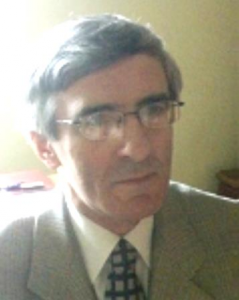 Pr. Mircea M. RADULESCU (Université Technique de Cluj-Napoca, Roumanie)
Pr. Mircea M. RADULESCU (Université Technique de Cluj-Napoca, Roumanie)
Mircea M. Radulescu received the Dipl.-Ing. degree in electrical engineering (with honors) from the Technical University of Cluj-Napoca, Cluj-Napoca, Romania, in 1978, and the Ph.D. degree in electrical engineering from the Polytechnic University of Timisoara, Timisoara, Romania, in 1993. Since 1983, he has been with the Faculty of Electrical Engineering, Technical University of Cluj-Napoca, where he is currently a Full Professor in the Department of Electric Machines and Drives, and Head of the Special Electric Machines and Light Electric Traction (SEMLET) Research Laboratory. He is the author or co-author of more than 180 published scientific papers in refereed technical journals and international conference and symposium proceedings. His teaching and research activities include classical and special electric machines; computer-aided design of electromechanical devices; design and control of small electronically-commutated motors; actuators and mechatronic drives; light electric traction systems; design and analysis of small-scale renewable energy equipment. He was an Invited Professor at Swiss Federal Institute of Technology Lausanne – EPFL, Switzerland; Helsinki University of Technology, Espoo, Finland; RWTH Aachen, Aachen, Germany; University of Akron, Akron, USA; University ‘Pierre et Marie Curie’, Paris, France; University of Picardie ‘Jules Verne’, Amiens, France, and Centrale Lille, Villeneuve d’Ascq, France. He is an Associate Editor of the international scientific quarterly ‘Electromotion’. His biography is listed in several editions of ‘Who’s Who in the World’ and ‘Who’s Who in Science and Engineering’. Prof. Radulescu is a Senior Member of IEEE, USA and a Member of IET, UK. He is also a member of the International Steering Committees of several conferences and symposia in the field of electric motor drives, electric traction, and renewable energy.
Nouvelles topologies de générateurs électriques pour micro-éoliennes
Contenu
Introduction aux éoliennes à petite échelle Exigences de conception des générateurs électriques pour les micro-systèmes de conversion d’énergie éolienne Analyse comparative de la conception des nouvelles topologies des micro-aérogénérateurs électriques Conclusion
June 04, 2019, Visiting Professor from Shanghai Maritime University
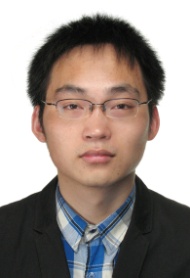 Dr. Hao CHEN (Shanghai Maritime University, China)
Dr. Hao CHEN (Shanghai Maritime University, China)
Hao Chen (M’ 17) was born in Jiangsu, China, in 1985. He received the B.E. degree in automation from Shanghai Maritime University, Shanghai, China, the M.E. and Ph.D. degrees in electrical engineering from the University of Nantes, Nantes, France, in 2008, 2010, and 2014, respectively. He is currently a lecture with Shanghai Maritime University China. His research interests include designing, modeling and control of electrical machines, and wind or tidal energy conversion system.
Research on power electronics and electric drives at Shanghai Maritime University
In the presentation, I firstly introduce Shanghai Maritime University and the colleges briefly. Then, I will focus on the introduction of the department of electrical engineering, especially the research institute of power drive and control. At last, I will present some personal research interests.
December 06, 2018, Invited Seminar
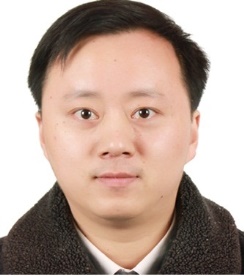 Pr. Jiaxin YUAN (Wuhan University)
Pr. Jiaxin YUAN (Wuhan University)
Jiaxin Yuan (M’07) was born in Nanchang, China, on June 10, 1981. He received the B.S. and Ph.D. degrees from the School of Electrical Engineering, Wuhan University, Wuhan, China, in 2002 and 2007, respectively. From 2007 to 2009, he was a Lecturer with Wuhan University, where he was engaged in research and development of STATCOM and DSP inverter control and, since 2007, he has been engaged in power electronics system control, power quality issues, and application and control of inverters. From 2016, he got the full Professor position at the School of Electrical Engineering, Wuhan University.
The Present Status and Future of Fault Current Limiter in High Voltage Power System
The first part of the presentation gives some brief introduction to Wuhan University, as well as the Department of Electrical Engineering and Automation. The second part will introduce the Present Status and Future of Fault Current Limiter in High Voltage Power System. Nowadays, the short circuit fault current increasing rapidly in all of the worlds. The short circuit fault current in some grid exceeds the capacity of the breaker, seriously threatening the safety and stability of the power grid. So the presentation will explain the principle of rapid increase in the short circuit current, analysis the different methods to reduce the short circuit current. At last, the presentation will propose a novel fault current limiter.
November 29, 2018, Invited Seminar
Sur l’approche géométrique des équations de Maxwell et de leur discrétisation
Nomember 20, 2018, LAMEL Day(Plénière du LAMEL)
Schedule
10h00-10h30 : Kévin DARQUES : Modélisation de la tension d’arbre 10h30-11h00 : Sylvain SIHAB : Modèles de pertes magnétiques 11h00-11h30 : Rihad CHERIF : Solveurs Non linéaire 11h30-12h00 : Loic Chevallier et Juien KORECKI : Code_carmel 14h00-14h30 : Emna JAIEM : Mouvement pour Méthode Spectrale 14h30-15h00 : Lydéric DEBUSSCHERE : Techniques de remaillage 15h00-15h30 : Guillaume CARON : Réduction de modèles
November 09, 2018, Invited Seminar
Oualid Messal received the Ph.D. degree in Electrical Engennering from Lyon University in Dec. 2013. From 2013 to 2014, he was a Temporary Assistant Professor of Electrical and Computer Engineering with Lyon1 University. From Sep. 2014 to Aug. 2018, he was a CNRS postdoc researcher at the Grenoble Electrical Engennering Laboratory. During his thesis and postdoc, he has been the principal investigator on a number of successful research programs including Aperam company, Renault, Altair, Schneider Electric, etc. The primary focus of his investigations is the area of magnetic materials for electrical engineering applications. From Sep. 2018, he is associate professor at Lille University where conducts research at the Lab of Electrical Engineering and Power Electronics.
Characterization and modeling of soft magnetic materials for electromagnetic applications
September 14, 2018, Visiting Professor from Xi’an Jiaotong University
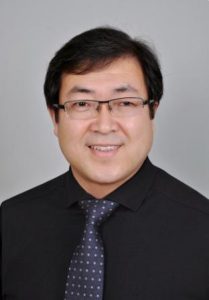 Pr. Shuhong WANG (Xi’an Jiaotong University)
Pr. Shuhong WANG (Xi’an Jiaotong University)
Prof. Shuhong Wang was born in China, in 1968. He received his Ph.D. degree in Electrical Engineering from Xi’an Jiaotong University, in 2002. Currently, he is a Professor with School of Electrical Engineering, Xi’an Jiaotong University. He is a senior member of IEEE (No. 92041995) and a board member of Council of Applied Superconducting Technology of China Electrotechnical Society. His research interests include theory, computation and application of electromagnetic fields and design, simulation and optimization of electrical apparatus. He presided one National Science and Technology Major Project, two projects supported by the National Natural Science Foundation of China and tens of projects supported by electric power company. He is the author of more than 100 technical papers as well as 6 professional books.
Research on short circuit dynamic characteristics and mechanical life of power transformer winding (Ph.D. student: Shuang WANG)
The dynamic characteristics of transformer windings under short circuit state are of great significance to the safe operation of transformers. The electromagnetic properties of a 110 kV transformer, including leakage magnetic field and electromagnetic force of windings, are calculated using finite element method (FEM). During the short circuit, the power transformer windings’ dynamic force, displacement and stress are calculated. The characteristics of windings’ dynamic motion process because of the big electromagnetic force are analyzed. The mechanical life model of transformer windings is established based on the mechanical experiment of the winding material. The analysis method and research results can provide reference for taking measures to enhance the ability to withstand short circuit of transformer windings.
Study on the Electromagnetic Field in HVDC/AC Hybrid Submarine Cable Tunnel (Ph.D. student: Ting ZHU)
There is a rapidly increasing on the volume of HVDC cable over the last twenty years. To reduce the cost of cable tunnel construction, it is very common that the HVDC cable is laid in the original alternating current (AC) cable tunnel. In the Xiang’an tunnel of Xiamen, China, the operation and maintenance personnel have an electric shock when contacting the sandboxes in DC side during the work period. A model of the tunnel with ±320kV DC cable lines and a 220kV AC cable line is shown in this presentation. The distribution of power frequency electromagnetic field in the HVDC/AC hybrid submarine cable tunnel is studied by simulation and measurement, and the cause of the accident that the operation and maintenance personnel have an electric shock in the tunnel is analyzed, which provides guidance for the safe operation of the cable.
Visiting Schedule
09h40-10h00: Welcome coffee 10h00-10h30: Presentation of L2EP Laboratory and of “OMN” Team 10h30-11h00: Research on short circuit dynamic characteristics and mechanical life of power transformer winding 11h00-11h30: Study on the Electromagnetic Field in HVDC/AC Hybrid Submarine Cable Tunnel 14h00-14h30: Magnetic materials characterization 14h30-15h00: Visiting Platform – Magnetic Materials 15h00-16h00: Discussions / exchanges on potential collaboration projects
September 4, 2018, Visiting Professor from Zhejiang University
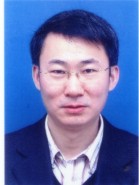 Pr. Shiyou YANG (Zhejiang University)
Pr. Shiyou YANG (Zhejiang University)
Shiyou Yang has been a full Professor at the College of Electrical Engineering, Zhejiang University since 2001. Currently, his research interests include computational Electromagnetics in both high and low frequency domains, the application of numerical techniques in electronic and electromagnetic devices. He has worked in the Department of Electrical and Computer Engineering, Duke University, USA, from November 2007 to May 2008 as a visiting scholar; the Department of Electrical Engineering, the Hong Kong Polytechnic University, Hong Kong, as a postdoctoral research fellow, research and senior research fellows from periods of September 2006 to February 2007, September 2005 to November 2005, March 2003 to February 2004, September 1999 to August 2001; Sau Paulo State University, Brazil, from September 1998 to August 1999 as a postdoctoral research fellow; and Université Pierre et Marie Curie, France, from September 9, 2017 to October 8, 2017 as a visiting Professor. So far, he has published more than 150 papers in referred international conference and journals, and more than 100 in high rank international journals.
Visiting Schedule
13:15 – 13:30 Presentation of “OMN” Team 13:30 – 13:45 Presentation of EEA department 13:45 – 14:00 Presentation of L2EP Laboratory 14:00 – 14:15 Presentation of “Control” Team 14:15 – 14:30 Model order reduction 14:30 – 14:45 Sophemis Optimization Platform 15:00 – 15:20 Visiting Platform – Electrical Vehicle 15:20 – 15:40 Visiting Platform – Power Electronics 15:40 – 16:00 Visiting Platform – Materials
August 31, 2018, Invited Seminar
 Pr. Chijie ZHUANG (Tsinghua University)
Pr. Chijie ZHUANG (Tsinghua University)
Chijie Zhuang received the B.Eng. and Ph.D. degrees from the Department of Electrical Engineering, Tsinghua University, Beijing, China, in 2006 and 2011, respectively. After a 2-year post-doc program, he became an assistant professor in Tsinghua University, where he was promoted to be an associate professor in 2015. His research interest includes air gap discharge and lightning protection, as well as numerical simulations for problems in electrical engineering. He has published about 30 papers in international peer-reviewed journals. He was the secretory of CIGRE C4.26 working group (WG), and is the secretory of C4.45 WG, a member of IEEE P2426 WG. He also serves as an associate editor of High Voltage published by IET and CSEE Journal of Power and Energy Systems published by IEEE.
Electrical Discharges: Experiment and Simulations——Two Examples
A leader is an electric discharge mechanism in long-air-gap discharges, which is generally described by a set of convection-diffusion equations, Poisson’s equation and Navier-Stokes equations. We report the shockwave phenomenon in an air-gap leader discharge observed using a Mach-Zehnder interferometer with a time resolution of several microseconds. The continuous temporal evolution of the shock wave and the plasma channel was recorded and reproduced with a thermo-hydrodynamic model discretized by MUSCL and TVDRK schemes, with the measured current as the model input. The simulation results for the shock wave front positions and the plasma channel radius showed good consistency with the experimental measurements. Detailed thermal parameters obtained through the simulation showed that continuous energy injection by the current results in a temporary over-pressure process in the plasma channel and produces the shock wave.
July 2, 2018, Invited Seminar
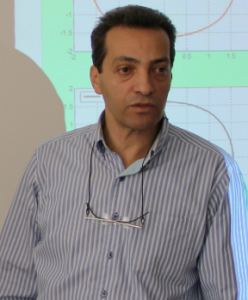 Pr. Anouar BELAHCEN (Aalto University)
Pr. Anouar BELAHCEN (Aalto University)
Anouar Belahcen (M’13-SM’15) received the M.Sc. (Tech.) and Doctor (Tech.) degrees from Helsinki University of Technology, Finland, in 1998, and 2004, respectively. He is now Professor of Energy and Power at Aalto University, Finland and Visiting Professor of electrical machines at Tallinn University of Technology, Estonia. His research interest are numerical modelling of electrical machines, magnetic materials, coupled magnetomechanical problems, magnetic forces, magnetostriction, and fault diagnostics of electrical machines.
Research at Aalto University, with an emphasis on the magnetomechanical coupling
The first part of the presentation introduces some of the research subjects at Aalto University, Department of Electrical Engineering and Automation. The second part focuses on the research related to the magnetomechanical coupling in electrical steel. Here a measurement setup for rotational magnetic field and arbitrary mechanical stress will be presented together with the results of measurements on a non-oriented electrical sheet. Further, a model for the magnetomechanical coupling will be presented and discussed. The magnetic properties of electrical steel sheets are known to be highly stress dependent. During the manufacturing processes and operation of these devices, multi-axial stresses are exerted on the core laminations. The performance of the electrical machines is then significantly affected by these multi-axial loadings. In order to be able to design efficient devices and analyze the existing ones with better accuracy, the dependency of the core losses on the multi-axial stresses should be studied comprehensively. Yet another important issue is the effect of these loading on the noise and vibrations of electrical machines.
Juin 21, 2018, Junior Seminar
Reda El Bechari was born in Taza, Morocco, in 1993. He received his Master degree from ENSAM Lille, in 2016. Jointly, he has got an engineering degree (Industrial Engineering) from ENSAM Casablanca, Morocco. He is currently a Ph.D. student with L2EP in Centrale Lille. His research fields include numerical methods of electromagnetic fields, robust design and reliability based design optimization for electromagnetic devices.
Approaches to Design Optimization of Electromagnetic Devices using Finite Element Method
The increasing constraints on the design of electromagnetic devices require numerical tools that are able to finely model the electromagnetic fields in the studied domain. Finite Element Method (FEM) is the most used tool to satisfy such a requirement. However, it may turn out that this tool is very expensive in computational time due to nonlinear behavior, 3D geometries, and time dependency. Thus, its usage for optimization, i.e. iterative process, should be made with caution since only a limited number of evaluations of the simulation tool are possible. Thus, the use of some specific algorithms may not be possible in a limited time, e.g. genetic algorithms, that require many evaluations of the FEM code. On the other hand, gradient-based algorithms cannot be used to their full potential due to the re-meshing error that may appear when computing the gradient using finite difference. There exist two approaches. A non-intrusive approach that considers the FEM simulation as a black-box and constructs cheap meta-models to reduce the computational burden while refining only in promising regions. And a second approach aims to exploit the derivative of quantities of interest computed from the finite element code by using the adjoint method to be able to use gradient-based algorithms.
Juin 1, 2018, Junior Seminar
Kévin Darques was born in Neufchâteau, Vosges, France in 1990. He received his Master of Electrical Engineering from Lorraine University in 2014. During is degree, he had the opportunity to work with the Jeumont Electric company to study the permanent magnet losses in electrical machines with concentrated windings. After that, he started a Ph.D. at the University of Lille and EDF R&D (CIFRE). His work focused on the analysis of the shaft voltage of high-power turbogenerators. His research topic focuses toward His research topic focuses toward the finite element analysis of electrical machines.
Contribution to the shaft voltage modeling of high-power generators
In large turbo-generators, shaft voltage exists due to the inherent minor imperfections in the construction of the machine or material imperfections but also to defects such as eccentricities or rotor shorts circuits. Therefore, its analysis can constitute a variable to be used to diagnosis some machine defects. A first step consists in determining in an accurate way the effect of these defects on the shaft voltage. In this aim, a didactic analysis is carried out with the help of numerical model based on 2D FEM. Two high-power non-salient pole synchronous generators of 2 and 4 poles are studied. The study is carried out gradually, first on a simplified structure and then introducing the effect of the stator slots, the parallel coupling, the load or eddy currents in the damper bars have been investigated. The obtained results are analysed in order to clearly determine the impact of each variable.
May 23, 2018, Invited Seminar
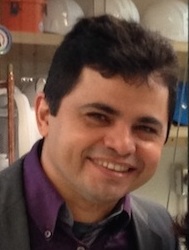 Antonio Wendell de Oliveira Rodrigues (IFCE)
Antonio Wendell de Oliveira Rodrigues (IFCE)
Antonio Wendell de Oliveira Rodrigues a soutenu une thèse de l’Université des Sciences et Technologies de Lille (France) sur un sujet relatif à l’informatique haute performance utilisant les GPU avec une approche IDM pour la simulation des machines électriques, cofinancée par le Ministère de l’Éducation Française et la société VALEO. Il a fait un stage postdoctoral en gestion de l’innovation au Collège Lambton (Canada) et est titulaire d’un diplôme en ingénierie électrique avec spécialisation en informatique de l’Université Fédérale de Ceará. Enseignant-chercheur à l’IFCE (Brésil) dans les domaines de recherche suivants : ingénierie logicielle, calcul haute performance, réseaux informatiques et systèmes distribués. Il travaille dans divers projets de RD&I en utilisant le traitement d’images pour l’identification des patterns, l’utilisation de drones pour l’inspection par imagerie thermique, SmartGrid, IoT, l’apprentissage de machine…
RD&I et projets appliqués au secteur électrique au Brésil
Antonio Wendell de Oliveira Rodrigues nous fera un panorama des projets de RD&I pour le secteur de la génération, la transmission et la distribution d’énergie au Brésil via une approche calcul scientifique, basée sur des techniques de traitement d’images pour la reconnaissance d’objets, le calcul haute performance, l’intelligence artificielle, IoT et autres.
April 26, 2018, Invited Seminar
 Brijesh Upadhaya (Aalto University)
Brijesh Upadhaya (Aalto University)
Brijesh Upadhaya was born in a small town of Saptari district, Nepal, in 1986. He received his Bachelor of Engineering (Electrical Engineering) degree from Kathmandu University, in 2008. After receiving the B.Eng. degree he joined the alternative energy promotion center (AEPC, Ministry of Environment), and worked as a technical officer for the rural energy development program in the hilly and mountaineous districts of Nepal. In year 2010 he participated for the Fredkorpset Norway (:fK) south-south exchange program as an electrical engineer for the development of the micro-hydro power, in Laos. During his assignment in Laos he was hosted by the Sunlabob Renewable Energy Ltd. Brijesh had an opportunity to work for the energy demand forcast in southern Laos, detail feasibility study of the micro and pico hydro systems in Northern Laos, design of the solar home systems for the projects in Cambodia and Marshall Islands. After completion of the project in Laos, Brijesh started his Master of Science degree in electrical engineering at Aalto University, Finland, in 2012. He received his M.Sc. (Tech) degree in 2014 with a major in electrical systems and minor in electrical drives. Brijesh enrolled as a doctoral student in the research group of electromechanics at the Aalto University and he is currently working towards his doctor of science degree in electrical engineering. His research topic focuses toward the development of a vector hysteresis model that take into account the magnetic anisotropy. The anisotropic model should be suitable for the magnetic field analysis of the mangetic devices.
Modeling of the magnetic anisotropy in a soft magnetic material
A non-oriented (NO) electrical steel sheet present a certain level of magnetic anisotropy. Unlike a grain oriented (GO) electrical steel, the degree of magnetic anisotropy found in the NO electrical steels vary considerably, between low-to-medium levels. A large percentage of the electrical applications utilize the NO electrical steel sheet, such as the rotating electrical machines. Thus, for an efficent design of the electrical applications, an accurate magnetic material model have become increasingly important. For this reason, the magnetic material model capable of describing a weakly anisotropic NO electrical steel sample has been studied in this work. This studied model is an extension of the phenomenological Jiles-Atherton hysteresis model. Furthermore, the extended model of the magnetic anisotropy is analysized, and the simulation results from this model has been compared with the measured magnetic charecteristic. Moreover, the numerical challanges has been studied, regarding the implementation of the vector Jiles-Atherton hysteresis model in a 2D finite element analysis.
April 20, 2018, (C2EI Day)
Schedule
Moustafa AL EIT : « Exploitation of the geometrical periodicity of electrical machines in the FE modeling »
Jian ZHANG : « modeling and experiment validation of squirrel cage asynchronous machine with and without faults » Emna JAIEM : « Spectral finite element method to solve magnetostatic problem taking into account the movement »
April 19, 2018, Junior Seminar
Sylvain Shihab receive his Master and Phd in condensated matter physics at the Pierre and Marie Curie University in 2012 and 2015. He worked mainly on the magnetization dynamics in the diluted magnetic semiconductor (Ga,Mn)(As,P). He is currently research engineer at the L2EP laboratory. His main researches are on the study and the characterization of soft magnetic steel alloys used in electrical machine to improve models describing magnetization behavior law.
Characterization and modeling of magnetic steels alloys used in electrical machines
Magnetic materials are the heart of electrical machine for mechanical to electrical energy conversion. Thus, an improvement of magnetic materials performance lead to an improvement of the electrical machine. To better understand all relevant materials parameters which have an impact on the magnetic properties, it is necessary to characterize materials in various experimental conditions. Then, starting from our observations, we can propose and improve models of magnetic behavior laws. During this seminar, I’ll present you our work on the magnetic characterization of non-oriented sheets and bulk magnetic steel alloys, on the conductivity measurement and on the improvement of magnetic losses model.
February 15, 2018, Invited Seminar
 Ruohan GONG (Wuhan University)
Ruohan GONG (Wuhan University)
Ph.D. candidate of Electrical Engineering School of Wuhan University. Graduated from Physics and Technology School of Wuhan University with BE degree at 2012. Worked as an associated researcher in High voltage and Insulation Center of Wuhan University form 2012 to 2018. Major in Lightning-protection and Grounding, Electrical Engineering Materials, Multi-Physics Coupling Simulation of electrical devices and Inversion problem.
Study on Hot-spot Temperature Calculation and Inversion Detection Method of Oil-immersed Transformer
Power transformers are one of the most important equipment of the electrical power system. The operating reliability of transformers has a close influence on security and stability of power systems. The end of the life span of power transformers is most due to the loss of their normal insulation, which is very much dependent on the highest temperature occurred in any part of a winding insulation system, as known as hot spot temperature (HST). Thus, getting the values and location of HST is significant to meet the goals of maximizing the load ability, improving the effective lifetime and lowering the total cost associated with transformer operation and maintenance. Some works focused on this topic has been developed as follows: (1) Considering the complicated and special solid-liquid-gas structure of oil-immersed transformer, the heat dissipation process inside transformer including heat conduction and convection is investigated by multi-physics coupling analysis. The validity and accuracy of calculation model is verified by temperature rise test. (2) According to the temperature and velocity distribution analysis of inner transformer, an inverse detection method of HST based on support vector regression(SVR) is put forward. This method takes load and tank temperatures as input characteristics. The relative error of HST steady state temperature inversion is less than 3%. (3) On the basis of steady inversion, an improved HST transient calculation method based on thermal-electrical analogy and IEC standard is proposed. The thermodynamic parameters of this model are estimated by Levenberg-Marquardt(LM) method. This model has been successfully applied to transformers with different voltage classes, capacities and structures. The maximum temperature difference is less than 3℃.
November 13, 2017, Invited Seminar
 Pr. Shuhong WANG (Xi’an Jiaotong University)
Pr. Shuhong WANG (Xi’an Jiaotong University)
Shuhong Wang (M’11–SM’13) received the B.E., M.E., and Ph.D. degrees in electrical engineering from Xi’an Jiaotong University, Xi’an, China, in 1990, 1993, and 2002, respectively. He is currently a Professor with the school of Electrical Engineering, Xi’an Jiaotong University. His research fields include numerical analysis of electromagnetic field and multiphysics problems, design and optimization of electromagnetic devices, measurement and modeling of properties of novel magnetic materials, the analysis and application for high temperature superconductivity.
Extended Finite Element Method in Electromagnetic Fields
In some situations, the classic finite-element method (CFEM) uses the shape functions for interpolation and does not account easily for regions of discontinuity and singularity in electromagnetic problems, such as the magnetic field and eddy current distribution in one silicon sheet of magnetic core, the electric field distribution near the crack tip in the electrical insulation material. The extended finite element method (XFEM) is able to incorporate the local enrichment into the approximation space within the framework of CFEM, the resulting enriched space is then capable of capturing the non-smooth and singularity solutions. The interface between two materials, which may cross through the element, can be described by using level-set functions and Guass integration is applied to construct the stiffness matrix of XFEM. Two numerical examples demonstrate that XFEM has some advantages for electromagnetic field analysis of discontinuous and singular solutions comparing with CFEM. The XFEM can not only improve the computational accuracy, but also save computation memory and time.
Le L2EP recrute
Dernières actualités
- Journée L2EP, 3ème année de Thèse, 5 Mars 2029
- Assemblée Générale du Laboratoire, 23 janvier 2026
- Soutenance de Thèse, Amira DHORBANI, 22 décembre 2025
- Prix jeune chercheur, Cyril MICHEL
- Séminaire JCJC, 19 Déc. 2025
- Soutenance de Thèse, Mhamad SHMAYSANI, 15 Déc. 2025
- Soutenance de thèse, Fabien DANCOISNE, 1er Déc. 2025
- Séminaire JCJC, 28 Nov. 2025
- Soutenance de Thèse, Mehyeddine SINGER, 26 Nov. 2025
- Best Student Poster Award, SMM 2025, Lea Saleh





